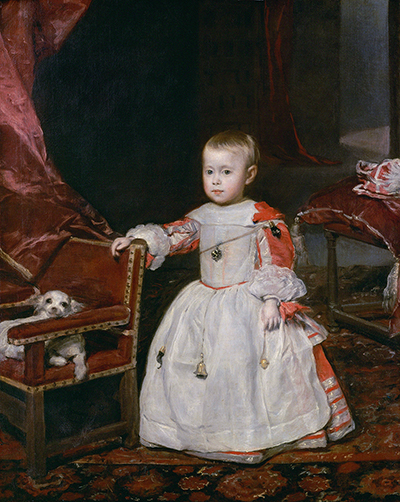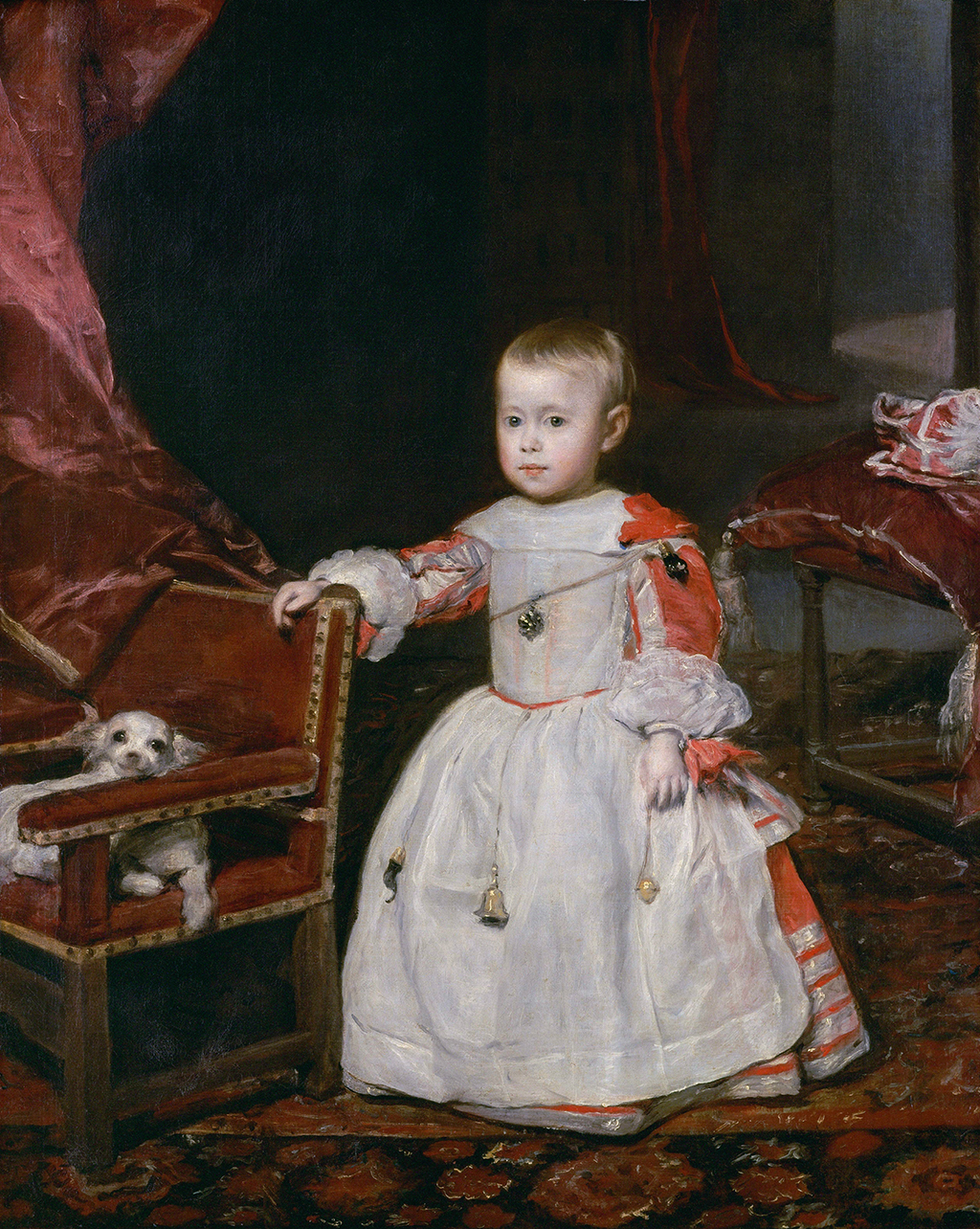Diego Velazquez produced this portrait of Philip Prospero, Prince of Asturias as far back as 1659, at which point the child would have been just two years old but already plans were being made for a potential succession to the Spanish throne.
The portrait features the infant in a beautiful outfit, whilst leaning an arm over a smart looking chair. The other hand hangs down by itself, and the child looks directly at us. A small dog, likely the child's pet, sits on this chair and also stares directly to the viewer. A large cloth is draped across the left hand side of the scene and continues on into the background. On the right is an open doorway which allows a little light into the piece. A further chair can also be seen on the right hand side, with a plump cushion. The artist may well have tried different arrangements of the furniture, perhaps in sketches, prior to settling upon th layout of the room that would be used for this painting. Portrait painters would take far more attention and care with setting up these environments than one might otherwise realise, in a similar way to how still life painters such as Chardin, Braque and Cezanne would very carefully angle the elements placed upon a table in order to perfectly balance light and colour.
Diego Velazquez was frequently called in to produce portraits of various royal figures. At this time, there was no photography or other form of modern media with which to record one's apperance and so artists were in high demand. Velazquez himself was considered one of the finest portrait painters across the 17th century, and although he tackled a number of different genres during his career, he was, first and foremost, a portrait painter. Sadly, many of the children that he depicted would not last long after the paintings had been completed, but this was simply down to the short life expectancy found in Europe at the time. Families were forced into producing as many children as possible in order to hopefully have enough survive long enough that their legacies could be passed on safely. Societies even depended on the safe succession of power, with many countries fragmented at this time, and internal conflicts extremely common. The child found here was born Felipe Próspero José Francisco Domingo Ignacio Antonio Buenaventura Diego Miguel Luis Alfonso Isidro Ramón Víctor, which, thankfully, was later abbreviated by most art historians. His parents were Philip IV of Spain and Mariana of Austria who had already lost several babies in their infancy, and sadly they would lose this child just before his fourth birthday.
This portrait can be found at the Kunsthistorisches Museum, Vienna, in one of Europe's most impressive art collections. This historic location is impressive enough on its own, even before you consider the items displayed within it. One of the memorable elements of the interior would be some of the stairways which even themselves feature some of Gustav Klimt's early craftmanship, as well as some contributions from his lesser known brother, Ernst. In terms of the collection itself, look out for the likes of The Art of Painting by Vermeer, David with the Head of Goliath by Caravaggio and also a Portrait of Cardinal Niccolò Albergati by Jan van Eyck. Few institutions in the world can introduce and educate us more about traditional European art and it remains amongst the most popular attractions on offer within Austria.





